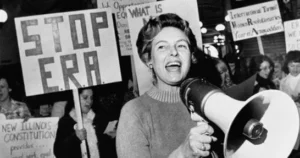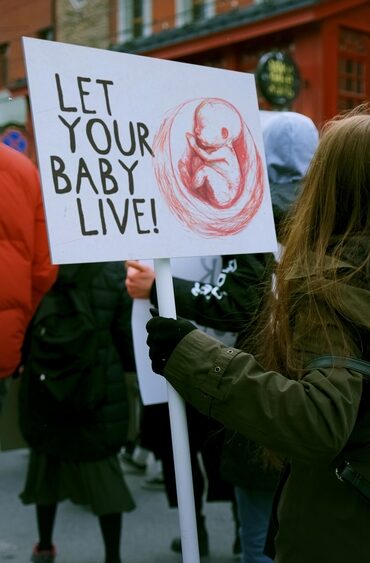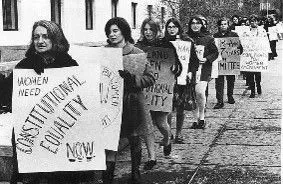
The Women’s Movement
The founders of the women’s movement wanted to be admired and respected for their womanhood and their equal brain matter. They did not say that to be equal to men, women must reject their femininity.
Back in 1927, conception determined when human life began. The American Medical Association urged state legislatures to pass laws to protect the unborn. Every state passed laws that made abortion a serious crime.
Life in the womb was most sacred. Abortion was a crime. Protecting the life of the unborn was paramount – a fetus was recognized as a human being with rights and opportunities to prosper.
Almost 100 years later, everything has shifted in the opposite direction.

Roe v. Wade is actually two cases – Roe V. Wade – Texas, and Doe V. Bolton – Georgia. The court read both together. Though Doe is rarely spoken about, in its nearly 40-year history, it is Doe that has the greatest impact on abortion policy. Doe provides what is called the “health exception” for an abortion after a fetus becomes viable. The “health exception” addresses the physical, emotional, psychological, familial, and age of the mother, thus providing legal justification to have an abortion throughout the entire gestational pregnancy.
The Doe decision distinguishes the US as one of the most liberal democracies in the world. Only seven countries allow abortion after 20 weeks. The US is one of four nations (Canada, China, and North Korea) that allow abortion for any reason after fetal viability.
Last September (2022), at a live national town hall debate at the National Constitutional Center in Philadelphia, “Should Roe V. Wade be overturned?” was addressed. Kathryn Kolbert – the pro-abortion lawyer who argued the 1992 Supreme Court case Planned Parenthood V. Casey (the court refused to overturn Roe), stated: “This court is prepared to overturn Roe and return the matter to the states.” A law professor on the panel nodded and added: “All of us assume the Court will overturn Roe.”
For the past 25 years, the hearts and minds of Americans have favored life over abortion. This is demonstrated in the decline in abortions throughout the US. The percentage of women having abortions today has dropped to 1972 levels (the year before the Roe V. Wade decision). According to the CDC, abortion rates are down in both pro-life and pro-abortion states by upwards of 30%.
Of Americans who identify as being pro-choice – two-thirds oppose late-term abortion. Seventy-nine percent of Americans oppose late-term abortions, and 82% of Americans oppose denying care to a viable child after birth.
The Dobbs v. Jackson Women’s Health Organization decision, issued by the U.S. Supreme Court on June 24, 2022, marked a seismic shift in American reproductive rights. The Court upheld a Mississippi law banning most abortions after 15 weeks of pregnancy and, in doing so, overturned the landmark decisions of Roe v. Wade (1973) and Planned Parenthood v. Casey (1992). These precedents had established and reaffirmed a constitutional right to abortion before fetal viability, typically around 24 weeks of pregnancy. The 6-3 ruling, authored by Justice Samuel Alito, concluded that the Constitution does not confer a right to abortion, effectively returning the regulation of abortion to individual states.
The decision sparked nationwide debate, as it allowed states to impose stricter abortion regulations or outright bans. Many states implemented so-called “trigger laws,” designed to ban abortion almost immediately after Roe was overturned. The majority opinion argued that abortion rights were not “deeply rooted in the Nation’s history and traditions,” a key criterion for recognizing unenumerated constitutional rights. In contrast, the dissenting justices warned of the decision’s impact on women’s autonomy, equality, and health, as well as the potential broader implications for other privacy-related rights. The ruling intensified political and legal battles over abortion access across the United States.

The founders of the women’s movement wanted to be admired and respected for their womanhood and their equal brain matter. They did not say that to be equal to men, women must reject their femininity.

At Maine Right to Life, we follow our early leaders with a shared belief that the rights of mother and child are inherently linked. By getting to know our early leaders, we admire their courage, are inspired by their persistence, and we feel called to carry the torch to protect the authentic lives of women and children.